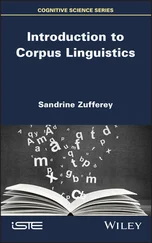T0 is hoping φ PRO to win the race. This T0 is then merged with its
subject (the D-pronoun he) to form the TP he is hoping φ PRO to win the
race. On the assumption that all sentences are CPs headed by an overt or
null force-indicating C, this TP will subsequently be merged with a null
C constituent to form the CP shown in (i) below:
(i)
CP
C
TP
ϕ
D
T'
he
T
VP
is
V
CP
hoping
C
TP
ϕ
D
T'
PRO
T
VP
to
V
DP
win
D
N
the
race
Evidence that the complement clause to win the race contains a null
complementiser and a null PRO subject comes from co-coordination
facts in relation to sentences such as:
(ii) He is hoping [to win the race] and [for you to see him win]
Since the italicised clause in (ii) contains the overt complementiser for and the overt subject pronoun you, the assumption that only like
constituents can be co-ordinated would imply that the bold-face clause
292
senten ces
must contain a null complementiser and a null subject. The assump-
tion that the main clause is also a CP headed by a null complementiser
is motivated in part by the observation that the force of a finite clause is indicated by the C constituent introducing it: hence, the null C at the
top of the tree in (i) marks the main clause as being declarative in force.
If the main clause is indeed a CP, we might expect its specifier position
to be able to be filled by a topic expression. This seems to be so, as we
can see from a sentence like the following (where additional material
is added to make the sentence more plausible):
(iii) The race round the lakes, he is definitely hoping to win it
21
Movement
In the previous section, we argued that clauses typically have a CP+TP+VP
structure, with the head C of CP marking the force of a clause (e.g. whether it is interrogative). From this perspective, a question like that produced by speaker B
in the dialogue below seems to have a relatively straightforward structure:
(330)
speaker a: What did he want to know?
speaker b: If the president was lying.
Given what we have said so far, we can assume that the (past tense) T-auxiliary was merges with the verb lying to form the T0 was lying; and the resulting T0 in turn merges with the DP the president to form the TP the president was lying. This TP in turn is merged with the complementiser if to form the complementiser
phrase (CP) if the president was lying. This CP has the structure shown below (simplified by not showing the internal structure of the DP the president, since this is irrelevant to the point under discussion):
(331)
CP
C
TP
If
DP T'
the president
T V
was
lying
The complementiser if here serves the function of marking the sentence produced by speaker B as having the force of a question.
Given the analysis in (331), the overall clause has the status of a CP which comprises a head C if and a TP complement the president was lying. Having noted that questions (and indeed other types of clause) are typically CPs, we are now in a position to introduce a further core syntactic operation (in addition to the merger and agreement operations discussed in section 19). This is movement, and there are several types.
Head movement
Let’s begin by comparing the clause If the president was lying pro-
duced by speaker B in (330) above with the question used by speaker B in (332):
293
294
senten ces
(332)
speaker a: What’s the question that everyone’s asking?
speaker b: Was the president lying?
In the question in (332), the auxiliary was is traditionally said to have been inverted with respect to the subject the president. What this means is that although auxiliaries are normally positioned after subjects (e.g. in statements such as The president was lying, where the auxiliary was is positioned after the subject the president), in questions like that in (332), an auxiliary can undergo inversion and move into some position in front of the subject. But what position does an inverted auxiliary move into?
Since the inverted auxiliary was appears to occupy the same pre-subject position in B’s utterance in (332) that the complementiser if occupies in (331), a natural suggestion to make is that the inverted auxiliary actually moves into the head C
position of CP. If this is so, we’d expect to find that an inverted auxiliary and a complementiser are mutually exclusive (on the assumption that only one
word can occupy a given head word position like C): in other words, if both
complementisers and inverted auxiliaries occupy the head C position of CP, we’d expect to find that a clause can be introduced by either a complementiser or an inverted auxiliary, but not by the two together. In the event, this prediction turns out to be entirely correct, as we see from the ungrammaticality of speaker B’s reply in (333):
(333)
speaker a: What did the journalist from the Daily Dirge ask you?
speaker b: *If was the president lying.
The fact that no clause can contain both a complementiser and an inverted
auxiliary provides us with strong evidence that inverted auxiliaries occupy the same structural position as complementisers – i.e. that both occupy the head C
position in CP.
But how can it be that an auxiliary like was (which normally occupies the head T position within TP) comes to be positioned in the head C position of CP? The answer is that auxiliaries move out of their normal post-subject position into pre-subject position in structures like (332), by an operation often referred to as inversion. In terms of the framework being used here, this means that an inverted auxiliary moves from the head T position in TP into the head C position in CP, in the manner indicated by the dotted line in (334):
(334)
CP
C
TP
DP
T'
the president
T V
was
lying
Movement
295
This type of inversion operation involves movement of a word from the head
position in one phrase into the head position in another phrase (in this case, from the head T position of TP into the head C position of CP), and so is known as head movement.
An important question raised by the T-to-C movement analysis of inversion
is what happens to the head T position of TP once it is vacated by movement
of the inverted auxiliary into C. What has been argued in work since the 1990s is that when a constituent moves from one position in a structure to another, the position out of which it moves remains intact and is filled by a silent copy of the moved constituent (sometimes referred to as a trace of the moved
constituent, abbreviated to t). There is interesting developmental evidence in support of the claim that a constituent leaves behind an empty trace copy of itself when it moves to a new position. Two-year-old children often produce
auxiliary copying structures such as the following (produced by a boy Sam
at age two years, nine months, whose father, Ian Crookston, kindly provided
the data):
(335) a.
Can its wheels can spin?
b.
Did the kitchen light did flash?
c.
Is the steam is hot?
d.
Was that was Anna?
What is going on here? The answer appears to be that when Sam inverts the
italicised auxiliary and thereby moves it from T to C, he leaves behind an overt copy of the auxiliary in T, so that the auxiliary appears in both T and C. This means that the derivation (i.e. formation) of a sentence like (335a) involves the kind of head movement operation indicated by the arrow in (336) (the relevant structure being simplified for expository purposes by not showing the internal structure of the DP its wheels):
Читать дальше
![Andrew Radford Linguistics An Introduction [Second Edition] обложка книги](/books/397851/andrew-radford-linguistics-an-introduction-second-cover.webp)











